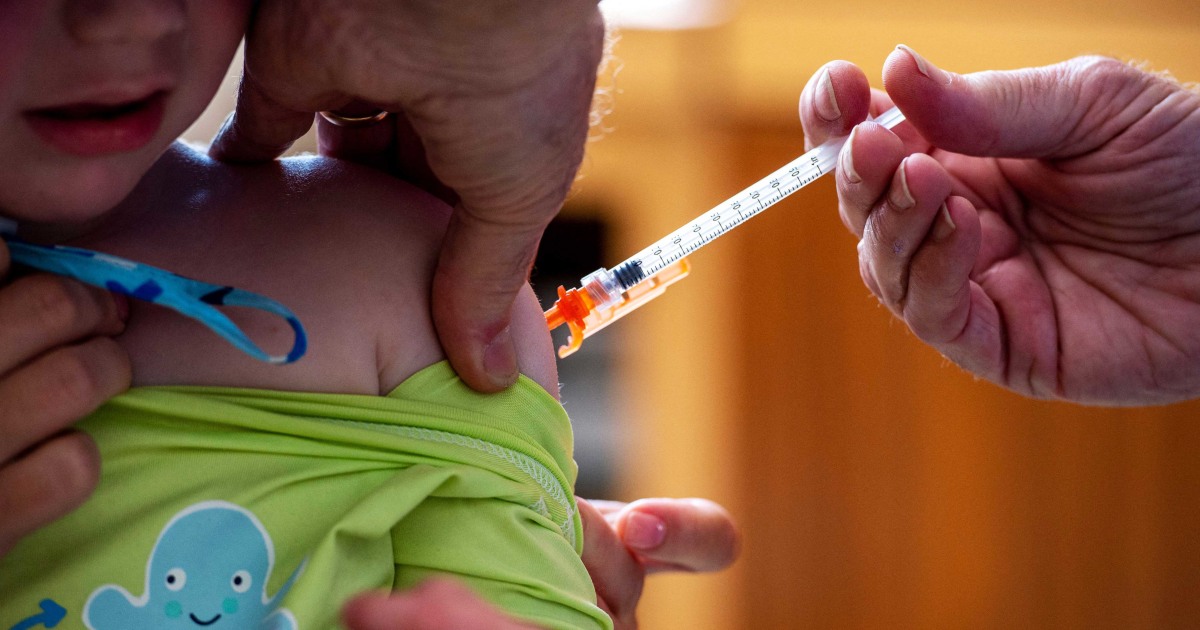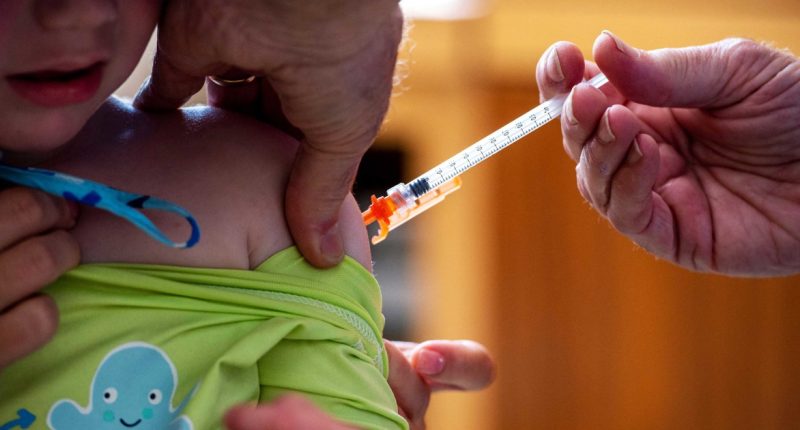
More than 100 children have died of the flu this season, the Centers for Disease Control and Prevention reported Friday.
The number of pediatric deaths — 103 so far — is not a seasonal record. While kids with underlying health problems are more at risk for severe outcomes from the flu, the latest CDC numbers provide a stark reminder that flu can indeed be devastating to any child.
“This is certainly sobering information, but it’s not something necessarily unexpected,” said Alicia Budd, head of the CDC’s domestic influenza surveillance team.
More than half of the children who died (53%) had no medical issues before their influenza infection, Budd said.
Among the 10 new pediatric deaths in the most recent report, most died within the last few weeks, Budd said.
Although cases seem to be peaking across the country, flu season is not over. The CDC estimates that the nation has logged at least 28 million flu illnesses, resulting in 310,000 hospitalizations so far this year. In addition to the 103 pediatric deaths, about 20,000 others have died of flu.
“There is a popular misconception among families that flu is just another cold virus, and that it’s no big deal,” said Dr. Kristina Bryant, a pediatric infectious disease physician at Norton Healthcare in Louisville, Kentucky.
“I have taken care of kids who are critically ill in the intensive care unit with flu,” Bryant said. “I’ve taken care of kids who have ultimately died from flu. And almost universally, their parents tell me, ‘I had no idea that flu could do this to my child.’”
Small airways, big immune reaction
The vast majority of children infected with flu every year recover. One of the virus’ biggest mysteries is how it can quickly and swiftly kill otherwise healthy and robust children without warning.
Kids have smaller airways, so breathing becomes compromised once a virus infects and inflames those airways, said Dr. Alexandra Yonts, a pediatric infectious diseases physician at Children’s National Hospital in Washington, D.C.
Children’s immune systems are superprimed to attack any new germ that comes their way, said Yont. Sometimes those immune responses go too far.
As with a lot of viral illnesses, more than anything it’s the body’s immune response that determines the severity of the symptoms.
“There’s something about influenza that is particularly immunogenic to our bodies and can create these massive cytokine storms and fevers that end up landing kids in the ICU with a sepsis-like picture,” Yont said.
Flu vaccines for kids effective this year
The CDC’s Budd said that nearly 90% of the children who died of flu this year were not fully vaccinated. For most kids, this means just one shot per year. But kids younger than age 8 need two doses if they’ve never received the flu shot before.
Just over 50% of kids got the flu shot this season, slightly lower than 53.3% last year. Preliminary CDC data shows the vaccine is up to 61% effective in keeping kids with flu out of the hospital.
“The vaccine can reduce the risk of a child needing to have a medical visit by about two-thirds,” Budd said. “And it can reduce their risk of hospitalization by about half.”
Experts can’t predict which flu virus strains might be more virulent in any given year. About half of the pediatric deaths in the 2023-24 season were due to an influenza A strain, the CDC reported, while 47 were attributed to an influenza B strain. One child had both A and B strains.
The 2014-15 flu season was a particularly severe one that took the lives of 141 children. Gianna Wehrkamp, a perfectly healthy and energetic 2-year-old, was one of them.
It was Jan. 8, 2015, when Gianna came home from day care with a slight fever — not even 100 degrees. Her mother, Angie Wehrkamp, said Gianna was playing normally and did not act like anything was wrong. “She was just as bossy as always,” she said.
The next morning, the normally smiley, spunky little girl was not herself.
“She just looked like she didn’t feel good,” Wehrkamp, 46, of Sioux Falls, South Dakota, said. “You could see it on her face.”
A trip to the doctor revealed that Gianna had influenza A. The doctor assured Wehrkamp that Gianna would soon be on the mend.
Gianna spent the day resting at home with her beloved teddy bear named “Dog” and watched cartoons; “Mickey Mouse Clubhouse” and “Frozen” were favorites. Gianna perked up a bit at dinner, eating black olives one by one off of the tips of her fingers. Her fever never rose above 101 degrees.
At bedtime, Wehrkamp said that Gianna’s lungs sounded “a little rattly,” so she brought the little girl into her bed to keep an eye on her overnight.
“Around 2 a.m., I woke up and she was not breathing,” Wehrkamp said. It took paramedics nearly an hour to get Gianna’s heart beating again.
By then, it was too late.
Less than 48 hours after she started showing symptoms, Gianna died of influenza.
“It all just happened so fast,” Wehrkamp said. “We did not know that healthy children could lose their lives to the flu.”
The little girl hadn’t received the flu shot the year she died.
“We had every intention of getting Gianna vaccinated,” her mother said. “But it just kind of fell off the radar as busy parents, and unfortunately we paid the ultimate price for that. Failing to make that a priority will forever be my greatest regret.”
Source: | This article originally belongs to Nbcnews.com










